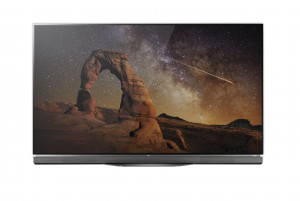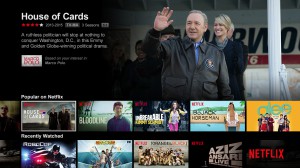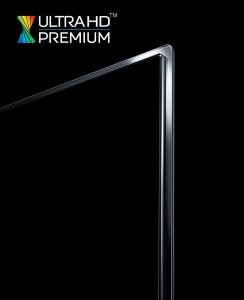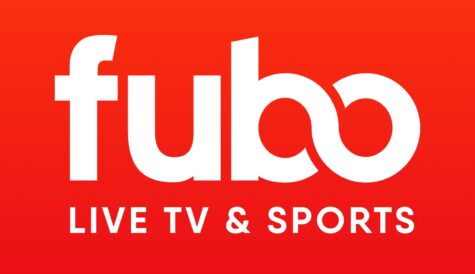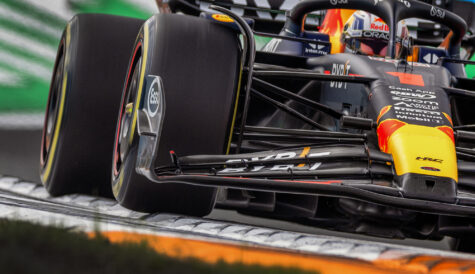The age of ultra: Advances in UHD technology
As the industry gets to grips with technologies like high dynamic range, it is clear that 4K is just the beginning of the ultra HD journey. Andy McDonald looks at the latest developments in the UHD space.
For many industry insiders, 4K barely scratches the surface of what is possible with ultra high-definition. The market is pushing towards newer technologies like high dynamic range (HDR), higher frame rates (HFR) and wider colour gamut (WCG). However, despite the Consumer Electronics Show at the start of the year heralding a number of developments in this space, standards are yet to catch up.
The latest device unveilings at Las Vegas this year saw the introduction of lower-cost 4K TV models from the likes of LG, Samsung, and Sony, and across the board HDR now features in the latest models of ultra HD sets from all the major TV manufacturers.
On the content side, Netflix CEO Reed Hastings announced at CES that his company would introduce high dynamic range content “later this year” – at the same time as he revealed Netflix’s snap launch in 130 new countries. The move sees Netflix follow Amazon’s lead as the next major over-the-top content player to throw its weight behind HDR, after its rival announced last year the launch of HDR content for its Amazon Prime Instant Video platform.
At CES the UHD Alliance – a trade association of film studios, consumer electronics manufacturers, content distributors and technology companies – also unveiled a consumer-facing logo to identify devices, content and services capable of delivering a “premium” Ultra HD experience. The organisation, which counts LG, Netflix, Samsung and Walt Disney Studios among its members, said it has begun licensing its new ‘Ultra HD Premium’ logo and certifying devices and services.
Yet, despite all this momentum, standards are still in a state of development with a number of standards bodies and organisations jostling to put their stamp on what is now widely perceived as the future of video. As it stands, ultra HD video that features HDR alongside other next-generation enhancements is still years away from launching on the open market.
A phased approach
In November 2015 the DVB steering board approved commercial requirements for UHD-1 Phase 2 – a move that will see the industry go beyond the 2160p, or 4K, high spatial resolution in UHD-1 Phase 1 and opens the door for features including high dynamic range, high frame rate and next generation audio.
David Wood is chairman of the DVB Commercial Module–UHD TV group that prepared the commercial requirements for the DVB UHD TV systems and is also a consultant on technology and innovation for the European Broadcasting Union (EBU) in Geneva, Switzerland. He believes that the Phase 2 requirements that were agreed will “probably be the mainstay of UHD-1 broadcasting in the decades to come.”
“Any of them [the new technologies] on their own would add at least a quality grade to the viewing experience given critical content that makes use of them and a TV set that can use them, and so collectively the Phase 2 images will have a large ‘wow’ factor,” says Wood.
As an international organisation that partners with the European Telecommunications Standards Institute (ETSI), the European Committee for Electrotechnical Standardisation (CENELEC) and the EBU to develop digital TV standards, Wood says that the only way for the DVB to meet the needs of its members is to prepare UHD specifications in phases. These are linked to the features and timescales requested by the different groups it represents.
Phase 1 allowed members to begin 4K UHD services in 2014/15, while Phase 2 is designed to let DVB members start offering HDR from 2017, and HDR combined with HFR from 2019.
“The new wider colour gamut has been agreed for some time [in] BT. 2020 and could even be included in a Phase 1 service,” says Wood, referring to existing recommendations by the Radiocommunication Sector of the ITU that are known as BT.2020.
“The HFR technical specification may be available in 2016, at the same time as the HDR specification, but using it will need much higher speed consumer decoders that will take some time to develop. This is why Phase 2 is seen as having two dates for services. The first, called Conformance Point A, from 2017 for HDR Phase 2, and the second, Conformance Point B, from 2019 for HDR and HFR Phase 2. The difference is because of the time it will take to develop the HFR decoders,” he says.
According to the DVB, there are a number of potential technologies for the HDR system that will be examined by the DVB Technical Module, but it’s too early to say what will be the outcome. The same situation applies to next generation audio.
Wood claims that HFR will take longer as decoding chips are more complex to develop. “HFR will need double the uncompressed bit-rate of conventional frame rates, and thus the processing and storage requirements will be much greater than conventional frame rates,” he says.
Device support
A month after the DVB approved requirements for UHD-1 Phase 2, ETSI’s new Industry Specification Group (ISG) on intelligent Compound Content Management (CCM) met for a kick-off meeting at ETSI’s facility in Sophia Antipolis, France.
The meeting was to begin work on a standardised solution to define a “scalable and flexible” decoding system for new and existing consumer electronics devices – ranging from Ultra HD televisions to smartphones – with this work supporting the DVB’s Phase 2 commercial requirements.
“ISG CCM will facilitate the smooth transition between today’s television standards and tomorrow’s high
dynamic range and wider colour gamut standards by defining a solution able to offer backwards compatibility with today’s displays whilst also providing the full quality for the next generation,” explains ETSI’s ISG CCM chairman, David Holliday. “The requirement is to provide the highest quality HDR/WCG for a new generation of televisions whilst not compromising the quality of the legacy signal for today’s displays. This is onerous and requires analysis to develop an optimal solution.”
Though ETSI’s internal committee discussions are confidential, the group aims to create a technology solution that makes sure that legacy and HDR/WCG content is “preserved and propagated through the appropriate interfaces” – covering a much wider range of displays and devices than those targeted by the DVB specifications.
“The ETSI ISG CCM work is limited to consumer devices and not the whole ecosystem. However, members of the ISG have been active in proposing and demonstrating solutions for multiple content genres across the entire ecosystem,” says Holliday. He claims that achieving an “optimal solution” requires in-depth knowledge of both the human visual system and creative processes for movie and TV content production.
The ETSI is a non-profit organisation that counts more than 800 member organisations form around the world, while the founding members of the CCM group include companies such as BT, Dolby Laboratories, STMicroelectronics and Telefónica. Highlighting the international credentials of the group, Holliday notes that both Samsung Research and Sony Europe have also joined the founders to create the CCM specification.
While ETSI aims to create the solution by the end of August 2016, Holliday says it is working in conjunction with a host of other organisations – including the DVB, ITU-R, the Society of Motion Picture and Television Engineers (SMPTE), the International Organisation for Standardisation-Moving Picture Experts Group (ISO-MPEG), the Advanced Television Systems Committee (ATSC), the Association of Radio Industries and Businesses (ARIB) and the Blu-ray Disc Association (BDA).
Certifying UHD
Another organisation now working in this space is the Ultra HD Alliance (UHDA), which formed at the Consumer Electronics Show in 2015 with mission to foster the Ultra HD ecosystem and promote the benefits of ultra HD entertainment technology. The powerful coalition of 35 companies has now introduced its ‘Ultra HD Premium’ logo and established several authorised test centres for device manufacturers.
President and board chairman of the UHD Alliance, Hanno Basse, who is also chief technology officer at 20th Century Fox Film Corp, explains: “The main focus of the UHDA has been to create a quality standard for content and devices for the next generation of audio-visual entertainment – including aspects like UHD resolution, high dynamic range, wide colour gamut etc. At CES, we announced the completion of a set of technical specifications that describe the requirements for this new quality standard. We’ve also established a logo programme – the ‘Ultra HD Premium’ logo – that is backed by a certification programme. Three manufacturers had devices certified by the time of the show and we continue to field requests from other CE companies who would like to get their products certified. We expect there to be close to a hundred motion picture and other titles available by the end of the year.”
Basse says that it is important for the content industry to understand the capabilities and performance of the display devices, in order to generate content that is optimised for them. He also claims that, to his knowledge, the UHDA is “the first cross-industry group to set a quality standard for content and devices”.
LG is one of the three manufacturers to announce ‘Ultra HD Premium’-certified devices, alongside Samsung and Panasonic – all of which, it should be noted, are UHDA member companies.
Dawn Stockell, head of brand for LG Electronics UK describes the Ultra HD Premium standard as important, as it highlights that LG is working co-operatively with the industry.
She says that the UHD Alliance recognises that OLED and LCD are fundamentally different and has two considerations for both brightness and darkness, “endorsing that OLED is a prime platform for viewing HDR”.
All 2016 OLED TV models from LG feature the Ultra HD recognition from the UHD Alliance, meeting standards set for resolution, high dynamic range, peak luminance, black levels, wide colour gamut and audio quality, according to Stockell. The LG TV line-up supports HDR formats such as HDR10 and Dolby Vision, has 10-bit panel and 10-bit processing power, and ColourPrime Pro technology. They also support the next-generation BT.2020 broadcast and distribution standard.
Like many industry watchers, Stockell claims that HDR – and its greater ratios of contrast between light and dark – offers the next level in picture quality. She also says that partnerships with organisations such as Netflix mean customers are able to access premium 4K content and that Amazon Instant Video is “the first provider delivering HDR content on LG OLED 4K TVs.”
Streaming leads the way
A more recent entrant to the UHD TV space is Roku. The first TV sets powered by the streaming device maker’s software launched in autumn 2014 in the US and then in Canada in 2015. At CES this year, Roku said that the first 4K UHD Roku TVs will be available to buy this spring. Meanwhile, a total of nearly 60 Roku TV models are expected to be introduced by its manufacturing partners this year.
“We announced at last year’s CES that we had a 4K reference platform that we were working with partners on. This year, one of our announcements was we will be shipping in March this year 4K TVs with TCL,” says Roku senior vice president and general manager of OEM, Chas Smith.
The move is Roku’s latest commitment to 4K. The firm’s Roku 4 streaming box, which launched stateside at the end of last year, already supports the format, while Roku has also created a 4K Spotlight channel to highlight 4K content from a variety of different providers on its platform.
Like many other players in this space, the next step for Roku is HDR. Earlier this year it released the Roku TV HDR reference design for TV partners to incorporate high dynamic range technology into future 4K UHD Roku TV models. Smith says that this design will support both HDR10 and Dolby Vision. “We haven’t a date for delivering that as yet, but again we see HDR in its various forms as being critical for that consumer experience,” he says.
Even though Roku says that broadband speeds of between 10 and 15 Mbps are currently required to receive a full 4K picture, Smith says he believes that the “vast majority of 4K content will be consumed via streaming” as it is “much easier to deploy”.
“It requires that you have a 4K TV but it doesn’t require any infrastructure changes. As long as your internet bandwidth is good enough – which it is I would say for many, many households – then it’s plug-and-play,” says Smith. “That’s not always the case when it comes to broadcast infrastructure, or if you’re looking at disk-based solutions, that’s certainly not the case either. We really do believe that streaming is going to be front and centre when it comes to 4K content.”
Paolo Pescatore, director, multiplay and media at research firm CCS Insight, agrees. He predicts that “up until 2018 most people’s first experience of 4K TV services will come from web and telecom players, not traditional broadcasters”.
“We are bullish generally with 4K and HDR and given that none of the traditional broadcasters have yet to support it due to cost, there’s a huge opportunity, particularly for telecom providers, to not only get behind it, but also push people to sign up to premium multiply bundles that include fibre broadband,” says Pescatore.
The Netflix effect
Netflix is a web player that is already betting on streamed 4K, and, from later this year, is due to add HDR content. The SVoD operator launched its first 4K content with its original drama House of Cards back in 2014 and last year claimed more than 300 hours of 4K, UHD content. “We will probably double this number in 2016. We are the world leader, by far,” claims Netflix’s manager, corporate communications for Europe, the Middle East and Africa, Yann Lafargue.
The majority of Netflix’s 4K catalogue is from its Netflix Originals. Today almost all of the firm’s new productions are made in 4K, except for the children’s content. However, Lafargue says that ultimately it is the director’s creative decision whether or not to use the technology.
Later this year the firm plans to “progressively roll-out some titles in HDR”, such as its original series Marco Polo and even though Lafargue says the recommended connection speeds for ultra HD (4K) quality is 20 to 25 Mbps, he says Netflix is seeing a “strong increase in the amount of 4K/UHD plans in our product mix”.
“The reason we’re excited about this [UHD] at Netflix has everything to do with how the internet is changing the delivery of TV. Traditionally, people have associated the internet with lousy video quality. It was only about 10 years ago that YouTube launched. People got used to postage stamp sized video that buffered. We’ve come a long way,” says Lafargue. “Today the best quality video only comes to you via the internet and Netflix is leaning forward here because we want to demonstrate that we can deliver the best quality video. Linear TV doesn’t have the willingness to invest massively in those new technologies – just look how much time was needed to simply upgrade to HD quality. It is not even available anywhere yet.”
Though online content providers have arguably stolen a march on their broadcast operator rivals when it comes to 4K, the first linear UHD channels are now also starting to come through. While BT Sport in the UK opted for an IP-delivery model for its dedicated 4K channel, BT Sport Ultra HD, satellite is increasingly proving another route to market.
At the end of 2015, satellite operator Eutelsat said its fleet broadcast a total of 6,000 channels, of which 757 are HD and three are ultra HD. These first commercial UHD channels are pay TV channel provider SPI International’s FunBox 4K station and two stations from Russian pay TV operator Tricolor – Insight UHD and Tricolor UHD.
Eutelsat’s director of marketing innovation, Michel Chabrol, believes that as UHD starts to take hold there will initially be a minimum of one channel per pay TV bouquet in countries with high competition, followed by “additional channels, thematic channels, and channels which are mixed between live retransmissions and playout”. He says that broadcasts of live sports and concerts would be a “very good Trojan horse for Ultra HD”, to get it into homes.
Looking ahead, Wood from the DVB explains that “most technical opinion today is that the HDR, in the right conditions, will add at least as much of a quality increment as UHD-1 increased resolution.”
The UHD Alliance’s Basse agrees that “the increase in resolution from HD to Ultra-HD in and of itself is not a sufficient quality differentiator.” However, as LG’s Stockell points out that “having a range of content providers for UHD is essential for ensuring uptake from consumers.”
As far as the DVB is concerned, full ultra HD, with all the bells and whistles, will take until 2019 to achieve. But with impatience from device makers to define, brand and sell ultra HD hardware to the masses, and a host of groups and organisations working on standards, there looks likely to be many more variants of ‘UHD’ in the interim.

